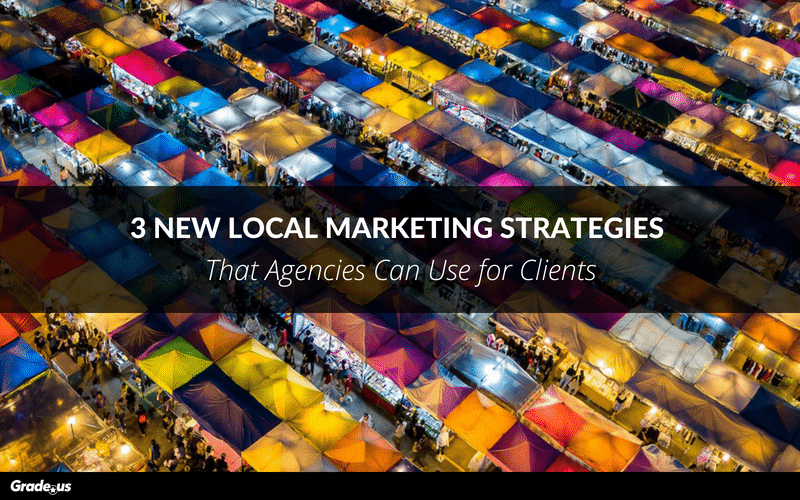Is your client's marketing stale?
It's a problem agencies seem to run into on a regular basis. The local marketing strategies they're using used to work. Then suddenly, the effectiveness of these strategies begins to decline. Their client's marketing shows signs of fatigue.
It's easy to miss.
When this happens, their revenues and profits typically tend to decline as churn rates climb. Your client's customers seem to be less interested in their products or services.
Where did things go wrong?
Traditional, evergreen local marketing strategies don't work anymore?
Customers change.
Your client's customers are in a constant state of flux. The demands placed on their customers is greater than ever before. They're skeptical, exhausted, overworked and short on time. They're under a lot of pressure which means...
You're under a lot of pressure.
Whether you realize it or not, customers expect your clients to adapt to their needs. They want, no, they expect you to change with them. When brands adapt, they're rewarded with more business. When they fail...
They're starved into bankruptcy.
The cause is surprising to most. It's easy to discount. It's subtle, counterintuitive and not really all that obvious. I'm talking about information overload.
Seriously?
Absolutely. There are lots frightening stats that talk about the overwhelming rate of change taking place online. This is the part that most people gloss over.
Your client's marketing fatigue is driven primarily by our collective response to information overload.
Here's what I mean.
· Expectations have changed. We're all expected to process information much faster. We used to have months or weeks to deliberate over a piece of information. Now we're expected to respond in seconds (sms), minutes (slack) or hours (email).
· An unhealthy increase in demand. We're expected to overproduce. At work, we're expected to follow the "first ones in, last ones out" mantra. Employers demand that we volunteer our family time. Our nights, weekends and vacation times without complaint.
· We're left drained and exhausted. We only have 24 hours in a day, yet the amount we're expected to accomplish in that time continues to grow. As people we're expected to do more and more with less and less. This is true even when we lack the tools and resources to do so.
Okay...
What does this have to do with local marketing strategies?
Quite a bit.
Your customers often have very little left to give
They're operating at a deficit.
This is the reason why your client's customers are in a constant state of flux. It's the reason their local marketing tends to get stale. Why their ads fatigue so much faster.
It's filtering.
Your client's customers are forced to sift through a plethora of options on a daily basis. If analysts are right, we're exposed to an average of 300 to 5,000 ads per day.
Which is exhausting.
Everyday your client's customers are forced to dig through a massive amount of noise to get to the things they actually want.
Why?
It comes down to a lack of clarity. How do you help your clients avoid these mistakes? The very same ones their competitors are already making?
You change the rules.
You adapt and use new local marketing strategies. These strategies should accomplish a few things if they're going to produce practical, actionable and compelling results for your client.
1. Make targeting more precise
2. Present offers to customers via the right channels
3. Leverage local marketing quick wins
1. Make location targeting and analytics more precise
Targeting is key.
Your clients probably already have marketing analytics in place for their business. But is it enough? If your clients are running a local business, they need location data. They'll need answers to several very specific questions. Questions their vanilla marketing tools may not be able to answer.
- How many people in my target audience are available locally (offline), at any given time?
- Where does my target audience spend their time?
- Which businesses (and competitors) do my customers frequent?
- When are my competitors’ busy (and slow) periods? What are the busy and slow periods for this location?
- Which offers will attract customer attention in this area?
- Competitor market share in this area?
- Is local foot traffic in this area climbing, stable or declining?
Imagine that you had access to this data whenever you needed. Would this impact your local marketing strategy?
You bet.
It would be a whole lot easier to create compelling offers, steal market share and attract more customers from your competitors.
Right?
Here's the thing. It's impossible to get. No competitor is going to go out of their way to share their proprietary data with your agency or your clients.
The good news?
You don't need them to. You simply reach out to Placed.com. Placed specializes in location analytics. Earlier this year they opened up their location analytics platform to the public. Thanks to a list of 160+ partners, Placed can instantly access data on 1,900 businesses, approximately 800 billion locations and 2.8 billion measured visits.
All for free.
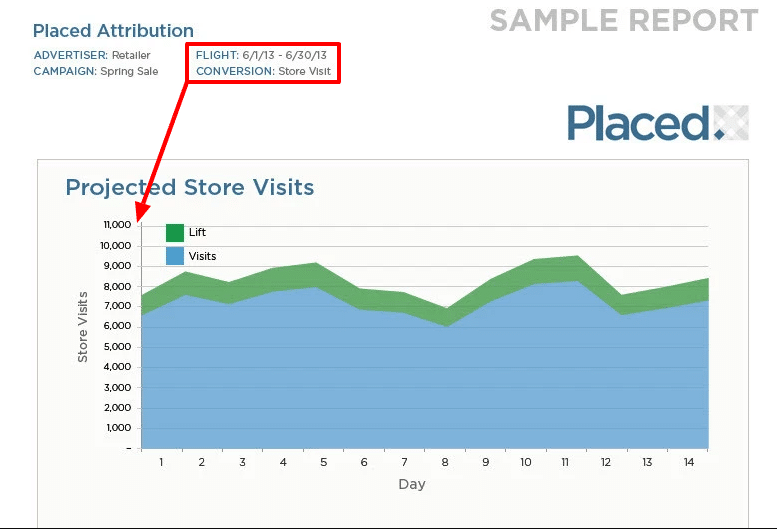
They've given businesses of any size, the ability to turn raw location data into actionable insights. Information their organization can use to make crucial decisions. It's something no other location-based analytics platform has offered to date.
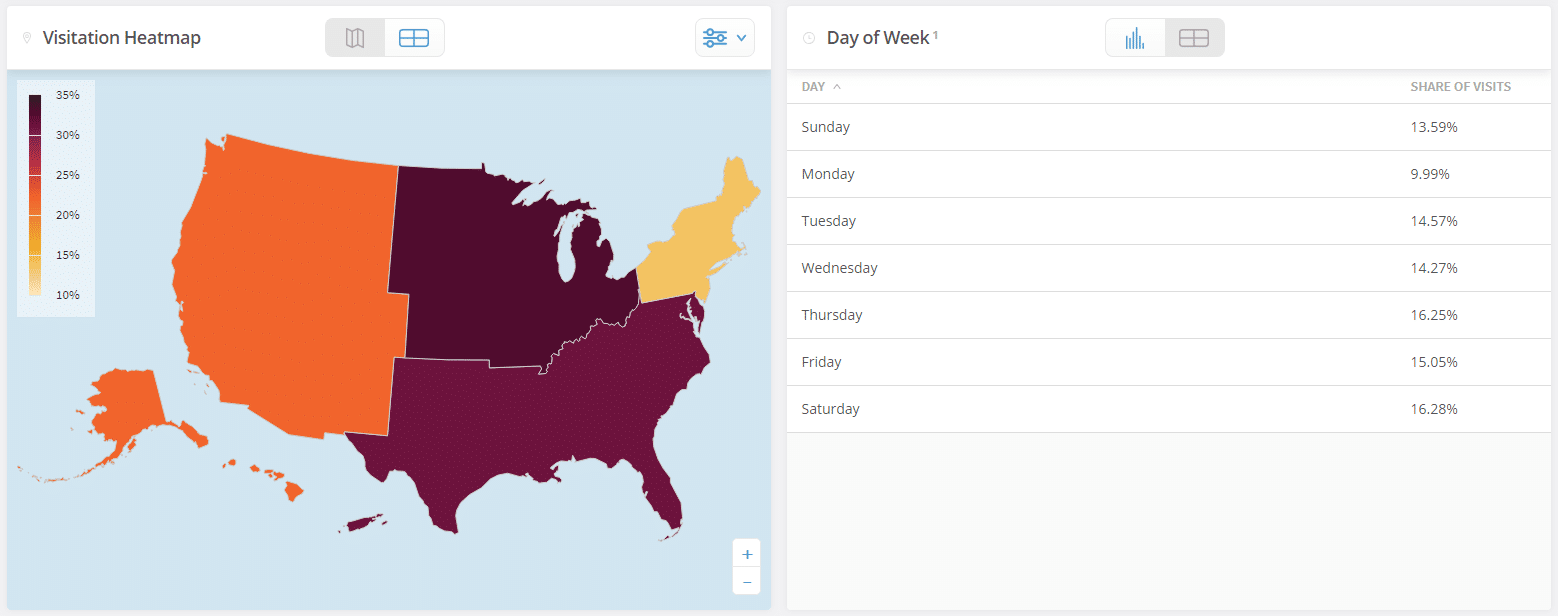
- You can track ad exposure from ad to store.
- You can gain in-depth knowledge on in-store visits and conversions for your clients and their competitors.
- Using location analytics, you’ll be able to measure the overall marketing lift (as well as sub-categories).
- You’ll have insider data, detailing the ins and outs of a particular location.
- Online and offline data you can use to attract customers at the right time.
A word of caution.
Location analytics should supplement the marketing analytics and customer intelligence platforms your clients are already using. It's not a panacea or a replacement.
It is a bit of an unfair advantage though.
Here's why this is so important. Roughly 80 to 90 percent of your local marketing success is determined here. The more time your clients spend getting to know their customers, the more successfully they'll be.
There’s more good news.
Google just added local ad campaigns that are based on foot traffic! Here’s why this is significant.
“Mobile searches for “near me” have grown over 3X in the past two years, and almost 80 percent of shoppers will go in store when there’s an item they want immediately.”
Google’s head of ads, Sridhar Ramaswamy, shared that the search engine has seen a 10x increase in the number of searches including the phrase “open near me tonight.”
What does this mean?
Google would use machine learning to automatically optimize local campaigns across a wide variety of Google-owned platforms.
Yes!
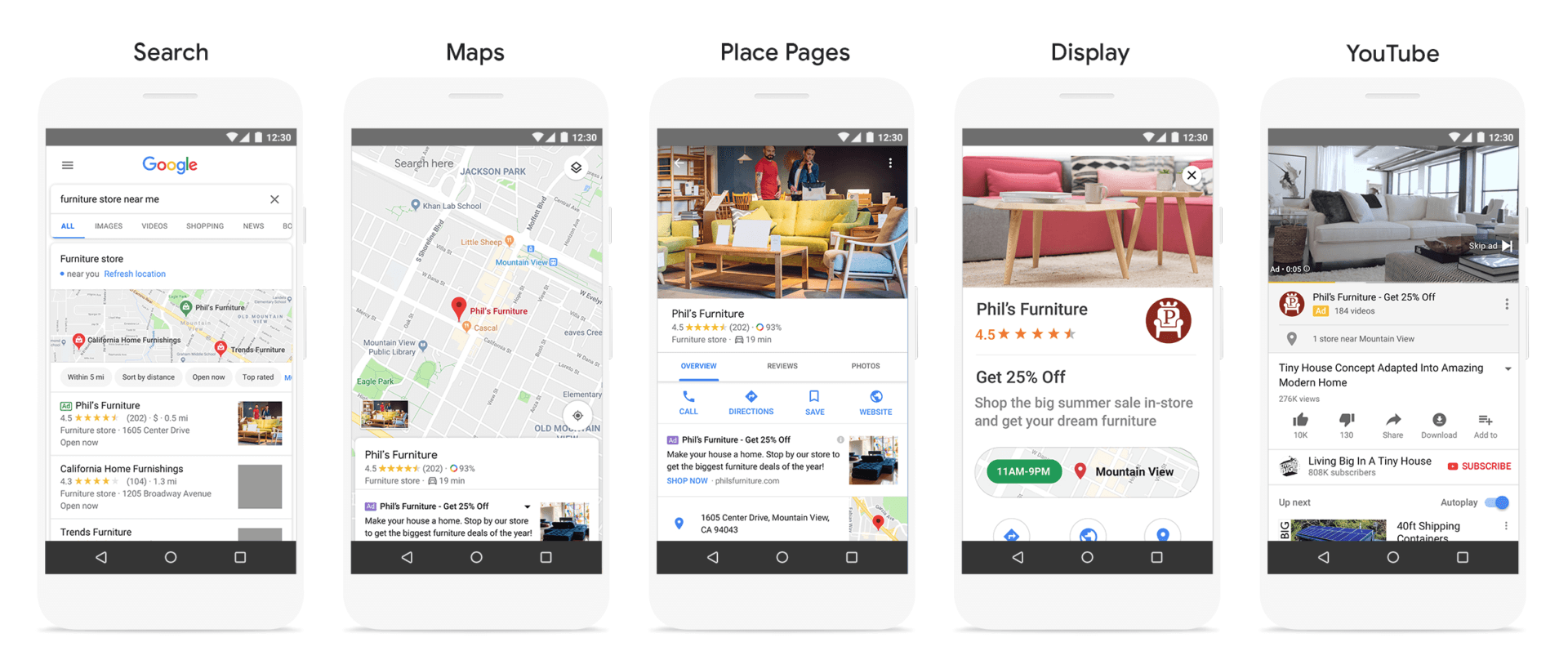
All of this means that it’s easier now to target the right customer, at the right time, regardless of location. Online or offline, it doesn’t matter!
This means you have everything you need to...
2. Present offers to customers via the right channels
Remember the saying "he who has the gold makes the rules?"
Your customers have the gold.
They determine how and when they want to be communicated with, what they're looking for and why. They've set the criteria, outlining who they'll buy from and when.
That's still a problem.
Because customers are changing. Some customers are moving away from traditional platforms like email and advertising. These platforms still work very well, but they're incomplete on their own.
Why?
Customers have diversified. They've expanded their sphere of influence to other platforms, products and services. Oh, and they expect you to come along for the ride (if you want their business that is). What does this mean?
More and more customers choose the non-traditional route.
What does that look like?
Applets
Task automators like IFTTT or Zapier are productivity tools that dramatically increase productivity. But they're not really thought of as local marketing tools.
Which makes them an untapped gold mine.
Here's how it works. You create a set of conditions. "If this happens then XYZ." With IFTTT, users are able to create "recipes," specific configurations. Once they're triggered, these recipes run automatically.
Here's a fantastic example.
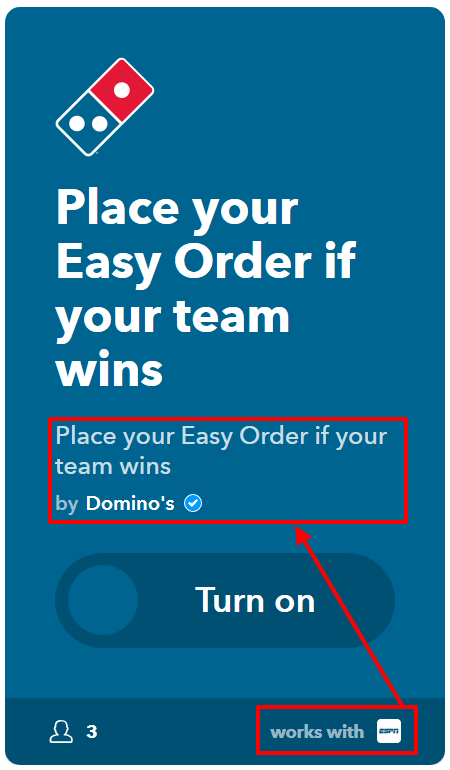
Domino's knows their target audience. They know they're sports fans, that they watch ESPN and that they're IFTTT users. They've combined these details into a single recipe that bypasses search engines, phone numbers or GMB profiles.
They've psychologically primed their local customers to automatically order pizza via IFTTT!
What a time to be alive!
It gets better. They've taken their customer demographics and psychographics and turned that into actionable data they can use.

These task automators can be used for business or personal tasks. These tools can be used to publish marketing content, automatically share updates via social media and much more.
Chatbots
Globally, more than 67 percent of consumers used chatbots in the last year. That number continues to climb as chatbots gain traction.
- Bots are available 24/7
- They’re non-robotic and they’re able to hold a conversation
- They save organizations a massive amount of time
- Bots are available to brands of any size
Your client's customers are warming up to the idea of working with chatbots. They're willing as long as they're able to get the outcomes and results they expect.
Bots are here to stay.
But many organizations aren't ready for chatbots. Most organizations are overwhelmed. There's simply too much on their plate. How can chatbots improve their client's local marketing strategies?
It's starts with goals.
- Creating an introduction with customers
- Warming up leads by addressing customer service concerns
- Decrease shopping cart abandonment by proactively asking customers if they need help
- Generating leads by getting landing page visitors to contact your sales and marketing teams
- Increasing customer engagement and response times with 24/7 availability
- Defusing customer objections by answering in-depth FAQ questions
- Increasing social media engagement by responding to reviews, messages and updates on social media
They're versatile and efficient if they're used properly. Okay then, how do you do that?
1. Identify your client's customer pain points.
2. Create a list of goals (how bots will serve their audience).
3. Define the channel (e.g. your website, Facebook Messenger, WhatsApp, Slack, etc.)
4. Determine how your customers purchase your product or service (e.g. which steps are most compatible with bots?).
5. Give your bot the information it needs to be useful.
There are some helpful primers on working with chatbots as well as resources you can use to create bots of your own.
How do we know it will work though?
With the right KPIs you'll be able to determine whether chatbots are a fit for your business.
· Open/delivery rates. If your bot starts a conversation, how many users open it?
· Click through rates. Do customers click on the links your bot share?
· Repeat visits. Do customers come back to chat with your bot?
· Top content. Which messages seem to resonate/perform better with customers?
· Conversion. Do customers buy from your bots?
· Sentiment and reaction. Are customers happy, frustrated or angry with your bot?
Are your client's bots performing as expected or simply failing? These metrics make analysis a pretty straightforward endeavor.
Here’s a short list of chat bot options:
You can get a more comprehensive list here.
Voice search
Purna Virji has a question for you.
If you wanted to find out who Microsoft's current CEO is, what would you search for if...
- You were on a computer, typing your question?
- You were talking to your phone using a digital assistant like Siri or Cortana?
For most people the answer would be...
"Microsoft CEO" for typed searches
"Who is the CEO of Microsoft?" for voice searches
She's right.
That's what I do. It's also what most people do. Voice search uses smartphones, smart speakers like Amazon Echo, and Google's microphone as a point of entry. That's important because voice search is growing rapidly.
- 71 percent of 18 to 29 year olds use voice search
- 59 percent of 30 to 43 year olds use voice search
- 39 percent of 44 to 53 year olds use voice search
- 38 percent of 54 year olds and up use voice search
Collectively, we're using voice search to:
- Answer questions
- Ask for directions
- Dictate text messages
- Call someone
- Request help with homework
What does this mean for local marketing strategies? It means your content should be more conversational. Instead of targeting one and two word queries like "Microsoft CEO," you'd use longer, voice friendly keywords. "Who is the CEO of Microsoft?"
Here's Purna's recommended approach:
1. Identify your high/highest value question phrases (e.g. "Where is my nearest Domino's pizza vs. What does Domino's offer?")
2. Optimize your local marketing (keywords and bids, local search profiles, landing pages, on site content, etc.) around natural language queries.
3. Add filler words like and, I, we, is, the, etc.
Why does this matter?
"Mobile voice-related searches are 3X more likely to be local-based than text." Voice search is happening now, even as many marketers are doing their best to ignore it.
Be first, be consistent and you win.
3. Leverage local marketing quick wins
Google officially rolled "posts" out to Google My Business (GMB) listings. These listings allow businesses to post messages directly to users via their Google maps, search and local three pack listings.
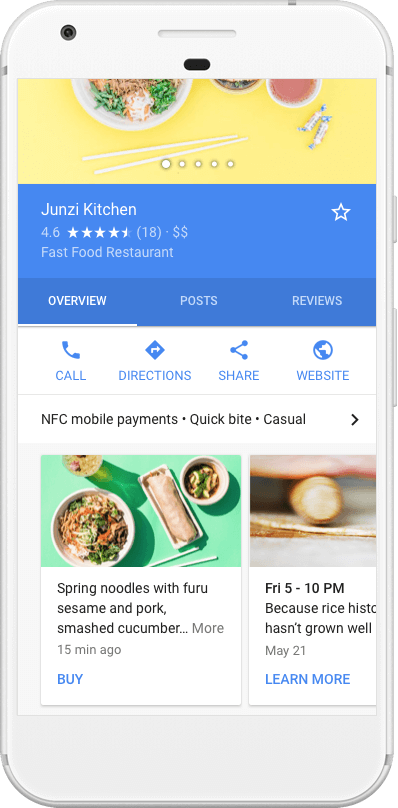
It's still new which means most local businesses aren't using it yet. This is an incredible opportunity for your clients, if they're able to create a compelling message or offer.
Which is where you come in.
Other sites suggest that you share generic offers on Google posts. They mention you can share daily specials, promote events or showcase your top products.
And you should.
But there's a far more compelling way to use the Google post strategy. Used well, you can quickly boost traffic, attract customers and generate a significant amount of revenue. What do I mean by "using posts well?"
Creating urgency.
Creating urgency gives you the ability to attract customer attention on demand. Here are the ingredients you'll need.
First you'll need an irresistible offer. This could be a loss leader, something free, an exciting incentive or bonus offer. It's something your customer wants very much and it's something you're willing to give away for little or nothing.
Your offer should:
1. Be desirable, something your client's customers actually want.
2. Be exclusive, something your client's customers can only get from them.
3. Make a clear and compelling offer. Your offer should tell the whole story in small, bite-size pieces.
4. Come with risk reversals. Guarantees, warranties, promises and assurances are all good examples.
Next, you'll need urgency triggers.
· Bonuses. "Order by Oct 25th and you'll receive this free [gift]." Your bonus can be a product or service, tangible or intangible. It can be relevant to your product or completely irrelevant, provided their target audience is interested.
· Takeaways. I call this the "McDonald's strategy." Do your clients include specific freebies or incentives with their products or service (e.g. product upgrades, free assessments, etc.)? Offer a select takeaway for a limited time. When it's gone, it's gone. Fast food restaurants like McDonalds do this well. They offer their McRib sandwich to customers for a limited time each year. You can adopt their strategy and make it your own.
· Bundles and packages. When it comes to bundles or package offers most marketers make a devastating mistake. They bundle their own products together. Savvy marketers bundle do the opposite. They bundle their products together with other people's products. This strategy can 2x, 4x or even 10x the value of your client's offer to their customers! All it takes is a little negotiating to make this a win/win for everyone involved.
· Vanishing data. There's a good chance your client isn't world famous. Why would customers care about a vanishing report you create? If it disappears who cares? Your customers will, if they know they'll miss out on the chance to speak with (or meet) a minor celebrity, trusted advisor or influential thought leader. Here's how it works. (a.) find a likeminded influencer, thought leader or minor celebrity. (b.) work with your likeminded partners to create content your customer actually wants. (c.) create a Google post (among other things) to tell customers about it. That's it!
· Invite/vip only. If your irresistible offer is compelling there will be demand. It's important that you limit the supply. Sleazy marketers do this as some kind of arbitrary false scarcity play. But there are better, more appropriate reasons to limit demand. Maybe your clients are prepared for a stream of new business, not an avalanche. If quality, fulfillment, attentiveness or engagement will suffer you should encourage your clients to limit demand.
There are lots of other ways to use Google posts.
You can create a waitlist, use a loss aversion timer, launch contests and host events. There are so many legitimate and honest ways to create real, compelling urgency.
irresistible offer + urgency = customer demand
Local marketing strategies don't get stale...
Actually they do.
At this point, your clients customers are in a state of flux. Your clients need your help to stay ahead of their competitors. The local marketing strategies I've shared today aren't a complete list.
There's always something new.
The local marketing strategies your clients are used to, they still work. But only if your clients continue to grow. Resist and the effectiveness of these strategies begins to decline.
Your client's customers have diversified. They've expanded their sphere of influence to other platforms, apps, products and services. They expect your clients to come along for the ride.
If they want their business they will.
Holding onto the past, focusing exclusively on what's worked, it's an easy way to lose traffic, leads and sales. Teach your clients to grow with their customers, to expand their local marketing strategies. You'll find your client's marketing stays fresh consistently.
About the Author
Andrew McDermott
Andrew McDermott is the co-founder of HooktoWin. He shows entrepreneurs how to attract and win new customers.

